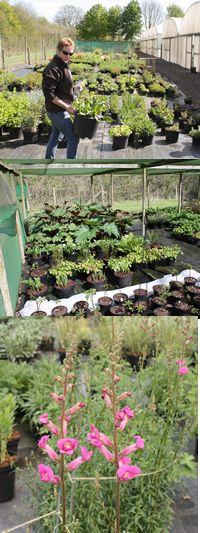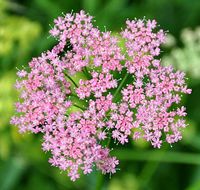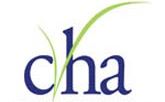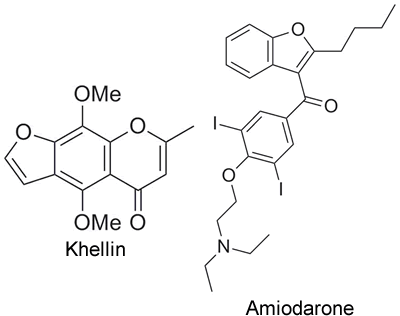May is the time to announce the winners of the David Miller Travel Bursary Award. This year we had twenty applicants and the panel had its usual task of narrowing this down to select the two winners. This year's winners are:
Benjamin Langendorf from the Department of Biology, University of York. Benjamin is studying the 'Pre-colonisation of strawberry planting materials with arbuscular mycorrhizal fungi to improve transplant growth and tolerance to soil-borne pathogens' and plans to use his award to attend the International Conference on Mycorrhiza at the Northern Arizona University in Flagstaff, USA
Idowu Joseph Rotifa from the University of Edinburgh and the Scottish Rural College. Idowu is working on an HDC funded project on 'Novel approaches for the management of leaf and bud nematodes in hardy nursery stock'. He plans to use his award to help fund a study visit to the USA visiting nematode specialists in Ohio, North Carolina and Georgia.
Later in June we join the Professional Horticulture Group South West for a visit to some Bristol Gardens followed by a tour of the new Life Sciences building at the University. Details to follow.
On 9th July we will be visiting Canterbury to learn about the gardens of Christ Church University and then move on to Deal where we will be looking at soft fruit production on Edward Vinson's Sandbanks Nursery at Faversham.
Peter Grimbly
Contents
The week before the May bank holiday sees the annual extravaganza that is the Chelsea Flower Show, a showcase for UK gardening skills. However, behind the glitz and glamour of the media hype, there is serious business to be done.
The Royal Horticultural Society first moved its premier flower show to the Royal Hospital site in 1905. Although the site is cramped and offers no scope for expansion the RHS has resisted calls to move to alternative locations so exhibitors have to put up with its limitations.

That does not mean that the show does not offer business opportunities, as a recent visit by the Horticulture Group in conjunction with the Professional Horticultural Group South West demonstrated. Hardy’s Cottage Garden Plants is located in the valley of the River Test, east of Whitchurch. Started by Rosy Hardy as a business selling vegetable plants at car boot sales, it now specialises in herbaceous perennials. Shows generate the majority of the company's sales so they have become a regular Chelsea exhibitor, this year winning their 20th coveted Gold Medal.
One of the key problems with Chelsea is timing. The show date can vary by as much as a week as the bank holiday moves – 2015 was about as early as it gets. Add to that the vagaries of the English weather and you have a challenge. To meet that, like most growers, Hardy’s propagate many more plants than they need and play a cat and mouse game with the weather moving plants to warmer or cooler locations to ensure that sufficient plants are at their best on the days of the show.
However, these are just ‘show’ plants which will demonstrate the range and quality that this nursery undoubtedly produces. They may elicit some orders but no-one can walk away from their stand with a new acquisition. At least not until the gong goes at the end of the final day and the previously sedate audience turns into a frenzied mob out to grab every ‘bargain’ they can.
As any visitor to the show or viewer of the TV coverage will know a major feature of the event is the show gardens. These are usually a collaboration between a sponsor who puts up the money and a designer. Neither usually has the capacity to prepare plants for the show and must rely on experienced nurseries like Hardy’s to get their plants ready for them, needless to say at a price. Rosy showed us some of the plants she is preparing for others, including such novelties as nettles, dandelions and cow parsley – for a wild-flower garden.
Space at Chelsea is very limited so by no means can everyone who wants to exhibit have a stand. A potential exhibitor usually has to exhibit at the regular RHS Westminster shows (where space is allowed to sell plants) and prove that you are capable of putting on a display of the quality the organisers demand. Once acquired you have a site which others less fortunate would like to take advantage of. Typically these will be the breeders of new varieties. Rosy thus enters into commercial deals to promote and market promising new varieties. She showed us Antirrhinum ‘Pretty in Pink’ which was one such new variety which she was putting forward on the breeders behalf for Plant of the Show. It was judged to be in the top twenty, however it failed to gain one of the top three spots. All is not lost for the variety however as Rosy has spotted that the variety could make a good cut-flower. If this proves to be the case, the royalties could more than compensate for the failure to achieve the top award.
Pictures;
Upper: Rosy Hardy shows off plants outside being grown for Chelsea...
Middle: ... and some under protection.
Lower: Antirrhinum 'Pretty in Pink'
Plants of the Month
Little and large – pink flowered Apiaceae
Chaerophyllum hirsutum ‘Roseum’, hairy chervil ‘Roseum’

The foliage, as with common chervil, is aromatic, and very finely divided. There are 35 species in this genus, all from northern temperate regions, with 12 species originating in Europe.
Melanoselinum decipiens, Madeira giant black parsley
Another pink flowered umbellifer, though this time monocarpic and certainly not delicate. 
This evergreen plant grows for several years, before flowering and then dying, but in bloom it will be covered with umbels of pink tinged flowers. But beware – in the UK you will need a sheltered spot – it is borderline hardy as you might expect from a plant endemic to Madeira. Maybe this is what the specific epithet is referring to – decipiens meaning deceptive or cheating.
Alison Foster
Medicinal Plant of the Month
Ammi visnaga, khella, Apiaceae

The dried flower stems (pedicels) of khella are sold in Egypt for use as toothpicks – hence another common name of toothpickweed. (Lower picture right by Michel Benoist)
(An aside on naming of drugs: Prior to a new drug being launched on the market it is given two names. One is known as the generic name and applies to the molecule that is the active drug substance however it is made, however it is formulated and whoever has manufactured it. The drug when formulated in a particular way and by a particular company is given another name – the proprietary or brand name. For example the drug substance amiodarone is formulated as tablets and an intra-venous infusion under the brand name Cordarone X by Sanofi-Aventis but under the generic name amiodarone by several other manufacturers.)
Alison Foster
News from our Associates

This autumn CHA will be taking groups to three shows; the Naivasha Horticultural Fair in Kenya between 18-19 Sept 2015; The International Horticultural Trade Fair at Vijfhuizen, Holland between 4-6 Nov 2015; Growtech Eurasia in Antalya, Turkey between 2-5 December 2015. Grants will be available for eligible UK companies wishing to participate and anyone interested should contact CHA.
Horticulture Industry News
For the very latest horticultural news follow us on
New role for Peter Gregory at EMR
Professor Peter Gregory has started his new role as EMR’s Director of External Affairs following his departure from the position of Chief Executive at the end of April. The new part-time post will see Peter interacting between EMR’s Board of Directors, the Senior Management Board and EMR’s external stakeholder groups. Day-to-day management of EMR is now being undertaken by an Executive Team who report directly to the EMR Board of Directors. More
Supercomputer unlocks the mysteries of cellulose
Scientists have moved a step closer to identifying the nanostructure of cellulose - the basic structural component of plant cell walls. Tapping into IBM's supercomputing power, researchers have been able to model the structure and dynamics of cellulose at the molecular level. The research shows that within the cellulose structure, there are between 18 and 24 chains present within an elementary microfibril, much less than the 36 chains that had previously been assumed. These insights could pave the way for more disease resistant varieties of crops and increase the sustainability of the pulp, paper and fibre industry - one of the main uses of cellulose. More
The origin of the beefsteak tomato
A team of scientists has identified a set of genes that control stem cell production in tomato. Mutations in these genes explain the origin of mammoth beefsteak tomatoes. More important, the research suggests how breeders can fine-tune fruit size in potentially any fruit-bearing crop. In its original, wild form the tomato plant produces tiny, berry-sized fruits. Yet among the first tomatoes brought to Europe from Mexico by conquistador Hernan Cortez in the early 16th century were the huge beefsteaks. The secret of the beefsteak tomato has to do with the number of stem cells in the plant's growing tip or meristem. Specifically, the team traced an abnormal proliferation of stem cells to a naturally occurring mutation that arose hundreds of years ago in a gene called CLAVATA3. Selection for this rare mutant by plant cultivators is the reason we have beefsteak tomatoes today. More
APS Group acquires Wight Salads
The APS Group announced their successful acquisition of Wight Salads Ltd (part of Vitacress). The acquisition will create a business with a projected annual turnover of £100M, making them the largest grower and supplier of British tomatoes. Acquiring WSL has added 66 acres of glasshouses across 5 sites at Arreton on the Isle of Wight with onsite packing facilities, together with a site at Chichester in West Sussex which houses WSL’s head office function, including a 40,000 sq ft packhouse. The combined group will now total 265 acres with 108 acres of high tech glasshouses dedicated to producing tomatoes, resulting in the APS Group becoming the UK’s largest grower and supplier of British tomatoes providing a significant boost to the British tomato industry. Vitacress is part of the Portuguese RAR Group and their Portugese and Spanish nurseries are not included in the acquisition, but APS will be marketing the fruit from there as well. More
The Chinese approve
A new hybrid plant used in anti-malarial drug production, developed at the University of York’s Centre for Novel Agricultural Products (CNAP), is now registered as a new variety in China. Developed through CNAP’s Artemisia Research Project, the plant is believed to be the first instance of Chinese registration for an Artemisia annua variety bred outside China. Since China is the world’s largest grower of Artemisia, the plant can now contribute even more to the global production of the anti-malarial drug artemisinin. CNAP’s project used fast-track plant breeding to develop many new hybrids which then underwent rigorous field-trialling in Africa and Asia. A single robust F1 hybrid was selected for its excellent biomass features and ability to produce good concentrations of artemisinin in its leaves. More
New top fruit business formed…
Norman Collett, Fruit Growers Alliance (FGA) and the Society of Top Fruit Growers (SGT) are set to merge to form a fully integrated marketing and growing group. Avalon Produce Ltd (APL), as the new business will be known, is on course to start trading in July 2015, when existing retail programmes run by the respective businesses come to an end. APL will be 50 per cent owned by the SGT and FGA producer organisation grower groups, who will form half of the management board. More
… and a new breeding programme
Two berry breeders have pooled resources in a new programme to trial strawberry and raspberry varieties in the Netherlands. Scottish soft-fruit firm, Angus Soft Fruits, has partnered with Dutch company Genson BV on a new strategic raspberry and strawberry-breeding programme. The arrangement between the two companies will see new varieties from Angus Soft Fruit’s breeding programme trialled in the Netherlands. Selected varieties will then be used across all of northern and central Europe, excluding the UK. More
Events Calendar
Durian and Other Humid Tropical Fruits
2 - 4 Jun 2015, International Society for Horticultural Science
Chantaburi, Thailand
Modelling in Fruit Research and Orchard Management
2 - 5 Jun 2015, International Society for Horticultural Science
Montpellier, France
Postharvest Pathology: Using Science to Increase Food Availability
7 - 11 Jun 2015, International Society for Horticultural Science
Bari, Italy
Irrigation of Horticultural Crops
8 - 11 Jun 2015, International Society for Horticultural Science
Lleida, Spain
Innovation in Integrated and Organic Horticulture
8 - 12 Jun 2015, International Society for Horticultural Science
Avignon, France
Bacterial Canker of Kiwifruit
10 - 13 Jun 2015, International Society for Horticultural Science
Bologna, Italy
Fruit Breeding and Genetics
14 - 18 Jun 2015, International Society for Horticultural Science
Bologna, Italy
Plant Biotechnology: Green for Good III
15 - 18 Jun 2015, The European Federation of Biotechnology
Olomouc, Czech Republic
The genomes of forest trees: new frontiers of forest biology
16 - 17 Jun 2015, New Phytologist Trust
Boston, USA
Rubus and Ribes
21 - 24 Jun 2015, International Society for Horticultural Science
Asheville, USA
The quest for tolerant varieties - Phenotyping at plant and cellular level
22 - 24 Jun 2015, European Cooperation in Science and Technology
Gatersleben, Germany
Cucurbits
22 - 26 Jun 2015, International Society for Horticultural Science
Cartagena, Spain
Planning for Climate Change
25 Jun 2015, Place and Space Research
London, UK
Ornamentals
28 Jun 2015 - 2 Jul 2015, International Society for Horticultural Science
Melle, Belgium
Apricot Breeding and Culture
29 Jun 2015 - 3 Jul 2015, International Society for Horticultural Science
Shenyang City, China
Hydroponics and Aquaponics at the Gold Coast
5 - 8 Jul 2015, International Society for Horticultural Science
Jupiter's Gold Coast, Australia
Arabidopsis Research
5 - 9 Jul 2015, Le Public Système
Paris, France
Ecology and Evolution of Emerging Plant Pests and Pathogens
13 - 14 Jul 2015, British Ecological Society
Exeter, UK
High Value Chemicals from Plants
13 - 14 Jul 2015, BBSRC & University of York
Norwich, UK
Meeting the challenges of food security
14 Jul 2015, Westminster Forum Projects
London, UK
Soil Biodiversity: How to Explore and Utilise Life in Soils?
16 Jul 2015, Rothamsted Research
Harpenden, UK
New Technologies and Management for Greenhouses
19 - 23 Jul 2015, International Society for Horticultural Science
Evora, Portugal
Science and plants for people
25 - 29 Jul 2015, Botanical Society of America
Edmonton, Canada
Vineyard Mechanization and Grape and Wine Quality
26 - 29 Jul 2015, International Society for Horticultural Science
Fredonia, USA
Plant Biology
26 - 30 Jul 2015, American Society of Plant Biologists
Minnesota, USA
Underutilized Plant Species
5 - 8 Aug 2015, International Society for Horticultural Science
Madurai, India
Humulus
6 - 8 Aug 2015, International Society for Horticultural Science
Yakima, USA
Pyrethrum
6 - 9 Aug 2015, International Society for Horticultural Science
Kyoto, Japan
Food Processing & Technology
10 - 12 Aug 2015, OMICS International
London, UK
Quality Management in Postharvest Systems
13 - 15 Aug 2015, International Society for Horticultural Science
Siem Reap, Cambodia
Present Constraints of Plum Growing in Europe
20 - 21 Aug 2015, International Society for Horticultural Science
Skopelos, Greece
Protea and New Ornamental Crops
20 - 24 Aug, International Society for Horticultural Science
Perth, Australia
Ecological Restoration
23 - 27 Aug 2015, Society for Ecological Restoration & Manchster University
Manchester, UK
Fig
31 Aug 2015 - 4 Sep 2015, International Society for Horticultural Science
Naples, Italy
If you would like to advertise a forthcoming event please contact ester.monfort@soci.org
Horticulture Group Contact Details
For submitting ideas or to volunteer to be part of a committee or a group, please contact:
Chairman - Peter Grimbly
Meetings Secretary - Alison Foster
Minutes Secretary - Margaret Waddy
Newsletter co-ordinator - Sue Grimbly scihortigroup@btinternet.com
Group Contact - Ester Monfort, E: ester.monfort@soci.org T: +44(0)20 7598 1584

